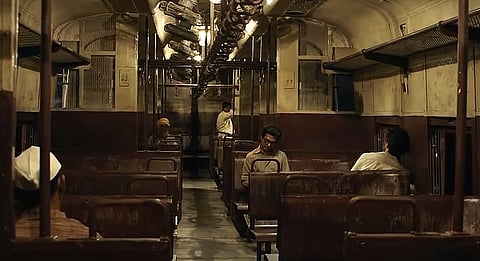
- Reviews
- Power List 2024
- Cannes 2024
- In-Depth Stories
- Web Stories
- News
- FC Lists
- Interviews
- Features
- FC SpecialsFC Specials

A good art designer must also be an architectural expert, a graphic designer and an able researcher. At least according to Rita Ghosh, art director, Manto, who then adds, "must have management skills and some knowledge of construction" to that list.
Art design is a crucial element of Nandita Das' period film, which spans five years of Urdu author Saadat Hasan Manto's life, chronicling his court trials, relationships with peers and friends from the film industry and his impulsive move to Lahore, Pakistan.
"Until and unless you have a space that is believable – whether it's in the past or contemporary – your story won't be enhanced. Whether you're constructing a set or using a real location, there are things you will have to add. You can pick a location that is ready, but that doesn't mean it will serve your purpose. Maybe it doesn't serve your colour scheme, maybe the props are not right as per the script, maybe it doesn't gel with the character. So creating an atmosphere and making it believable in terms of your story is what an art director should do," says Ghosh.
Her brief was to create a "believable world for Manto" both in Bombay and Lahore, where the latter half of the film is set. To help viewers distinguish between both cities and ensure they were visually striking, Ghosh says she used contrasting colour palettes. "We used more powder blue in Lahore and ochre and other warmer colours for Bombay."
When the film first went on the floors, the crew initially thought of shooting its exterior portions in Lahore, where Manto lived between 1948 and 1955. However, following the 2016 Uri terror attack, permission to shoot in the neighbouring country was denied. "We thought: Of course! Before Partition, this was part of Punjab only. So let's go explore Ludhiana and several other places."
On reaching there, however, Ghosh realised that things had changed drastically over the years. A spate of construction had given rise to chaotic and bustling streets. "We couldn't find a single street where we could either construct something or manage to shoot." She and her four-member team moved on to Chandigarh and Delhi, finally arriving at Vaso, a small village in Gujarat, a few weeks later. "The situation was under our control there, we could camouflage what we needed to, there were fewer crowds to manage," she says.
Recreating Pakistan there was made easier with the help of Das' Lahore-based friends, who would share family photographs with the crew. The team also sourced copies of LIFE Magazine, known for the quality of its black-and-white photographs and in-depth chronicling of India pre and post-Partition. An American periodical that began publication in 1883, Ghosh describes it as "probably the only one to have covered India so extensively during that period". They also looked at articles from prominent newspapers at the time, notably The Times of India.
For the Mumbai portions, Das' brief was that the city should look as did "through Manto's eyes", which meant no clichés.
Ghosh and her team had to take into account everything from the font used in the signboards of that period, to the mode of transportation to the architectural style of the neighbourhood shops. Even minute details such as the kind of cigarette boxes used at that time to magazines and newspapers strewn on tables were recreated.
"When you start looking for something, you feel like you will never find it. There are so many things, where do you even start?" says Ghosh. Some props were easily found, such as the wooden wheels of a tonga – a popular mode of transport in Bombay at the time. They were eventually sourced from Ahmedabad.
A specific type of milk bottle that Safia used to feed her daughter was more difficult to track, owing to its rarity. "We saw the reference and thought we would never find it and so should look for an alternative. One day we were just sitting in Chor Bazaar and we just happened to ask somebody and he was like, "Haan, mil jayega. Bas chaar din ka time de do. (You'll get it. Just give me four days.)" We thought he was bluffing, but after a few days he really did get us the bottle – two of them," says Ghosh.
The team also hit a roadblock when it came to a brand of cigarettes that Manto smoked – State Express 555. These were imported from the UK and considered to be a status symbol in the '60s, when they cost just 5 annas a packet. Ghosh was easily able to track the cigarette boxes to the same market, but their less-than-mint condition meant that they were unusable. "You're showing a period film, it's not set in present-day. The boxes should look new, not used. The boxes we saw were so old." The team eventually built them from scratch.
The toughest scene to film? One at a refugee camp. "We were supposed to show the camp in the winter. We were shooting in Gujarat and there was a harsh sun on our heads while we were handing out blankets to everyone," she laughs.